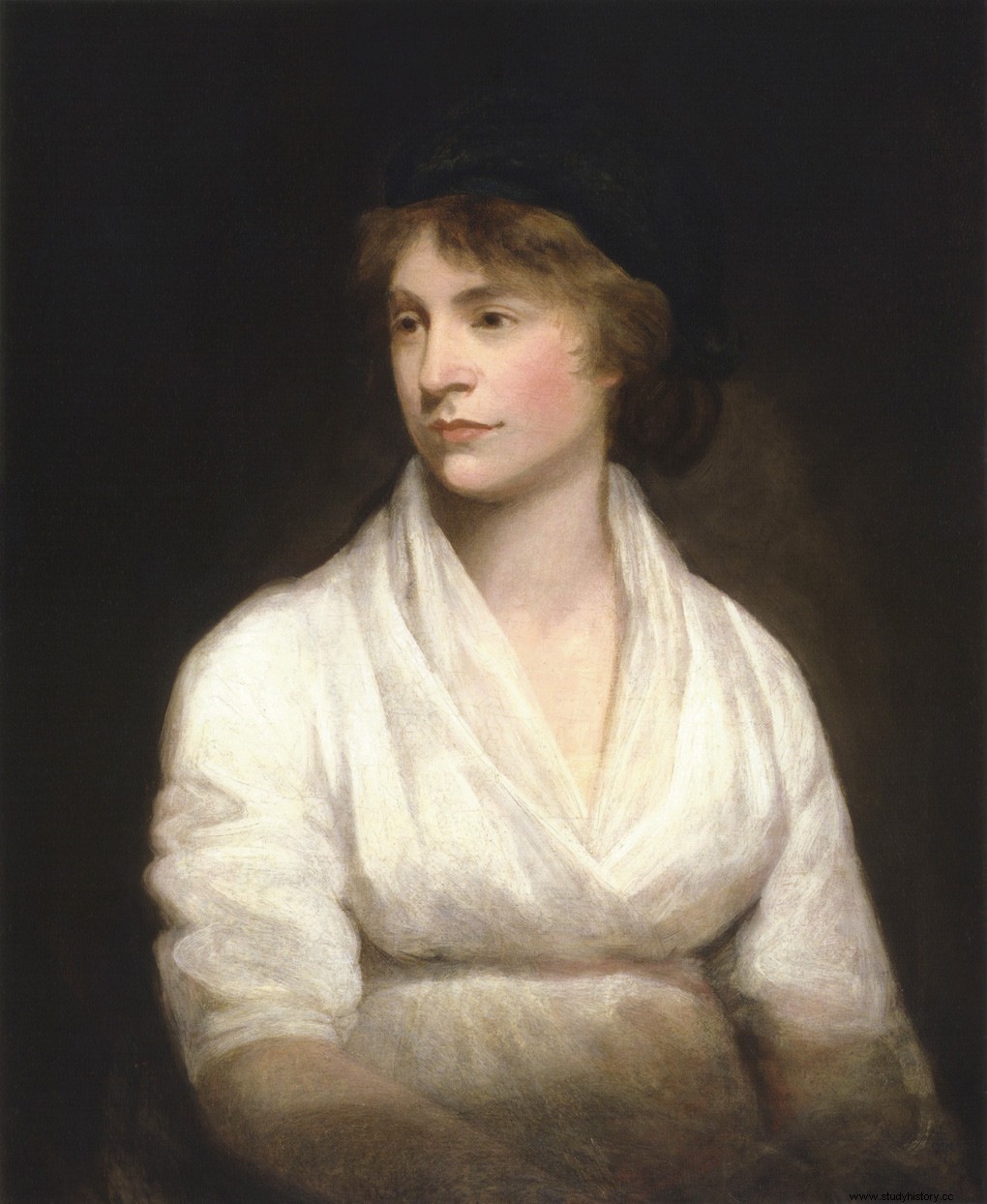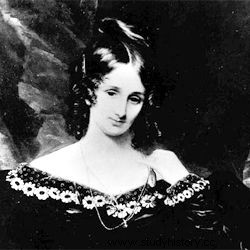Woman of English letters, Mary Wollstonecraft ( – September 10, 1797) leaves several works on the theme of education and claims the education of women and equal rights. She is recognized, at the emergence of feminism, as one of its pioneers. In 2017, you voted for her for the posthumous Nob'Elle prize.
“I must have first place or none”

Second of the seven children of Elizabeth Dixon and Edward John Wollstonecraft, Mary Wollstonecraft was born on April 27, 1759 in London. She is born into a well-to-do family, but her father speculates and drives the family to the brink of ruin. A violent man, Edward beats his wife and Mary often tries to protect her.
During adolescence, Mary formed herself intellectually and socially thanks to two very important friendships for her, with Jane Arden who studied with her, and with Fanny Blood whom she considered a member of her family. Mary is very wholehearted in friendship, writing to Jane:“I am somewhat singular in my view of love and friendship; I must have first place or none”.
Fanny Blood
At 19, Mary Wollstonecraft left her parents and became a companion in Bath, with the widow Sarah Dawson. Her employer is difficult and the experience, painful, only lasts two years after which Mary returns to her mother. After the latter's death, she moved in with the Bloods, but she disliked their conventional view of marriage and the role of women.
After, among other things, the painful experience of her parents' marriage, Mary believes that marriage is a patriarchal institution that oppresses women. In 1784, she helped her sister Eliza, in the throes of depression, to leave husband and child and flee. Eliza will be socially ostracized and experience a difficult life.
After two years with the Bloods, Mary plans to settle down with Fanny but their limited means do not allow it. The two women open a school for young girls together, but Fanny gets married. She has fragile health, and her husband takes her to live in Europe to try to treat her. When a pregnancy worsens her condition, Mary drops out of school to join her and take care of her, but Fanny dies. This tragedy deeply affects Mary.
The Rights of Women
After Fanny's death, Mary Wollstonecraft became a governess in Ireland and served as a teacher to the two daughters of the family. After a year, frustrated by the experience, she decided to start writing. At first, she produced translations and literary criticism and began to frequent intellectual and literary circles in London.
For her writings, Mary bases herself on her own experience, her friendships and professional experiences. Thoughts on girls’ education , her first published book, presents advice for children on female education. Mary:A Fiction , his first novel, is inspired by his friendship with Fanny. Original Stories from Real Life, her only book for children, is based on her experience as a teacher and is already positioning herself for the education of girls.
His writings become increasingly political with A Vindication of the Rights of Men , written in response to Reflections on the Revolution in France of Edmund Burke, defending the monarchy. Mary's book, in turn, defends republicanism. Two years later, in A Vindication of the Rights of Woman, now considered one of the first feminist works, it pleads for the education of girls and the revaluation of the role and status of women, and proposes a national education plan.
Gilbert Imlay
In 1792, stimulated by the French Revolution, which she defended in her writings, Mary Wollstonecraft set sail for Paris and joined intellectual circles. There, she lives an adventure with Gilbert Imlay, an American officer with whom she has a daughter, Fanny. She did not stop writing, however, and in 1794 published An Historical and Moral View of the French Revolution .
Mary and Gilbert do not marry, but they pose as husband to protect Mary. On her return from Paris, she continues to use her lover's name to protect her daughter from the strict social conventions of the time. Gilbert ends up leaving her, and Mary, whole in love as in friendship, sends him furious letters betraying a probable depression. In 1795, she made two suicide attempts, but she was saved by Gilbert the first time, by an unknown person the second time.
William Godwin

Mary Wollstonecraft gradually returned to intellectual and literary life in London, in circles where she rubbed shoulders with the philosopher William Godwin, but also Mary Hays who became her friend, Elizabeth Inchbald and Sarah Siddons.
Mary begins an affair with William Godwin and becomes pregnant. So that their child is not born out of wedlock, they marry. Mary's relatives then discover that she was not the wife of Gilbert Imlay, and the scandal costs them connections.
In August 1797, Mary gave birth to her second child, Mary, who would follow in her mother's footsteps by becoming a writer under the name of Mary Shelley. After giving birth, Mary suffered from puerperal fever, a common infectious disease at the time. She dies a few days later, after a long agony.
Mary Wollstonecraft and posterity
The year after her death, William published a biography of his wife, with the aim of publicizing her writings and her political thought. But what it reveals about Mary's life, her affairs, her suicide attempts, shocks the society of the time. The reputation of the writer takes a hit and she becomes better known for her life than for her works. Writers even make her a model of what a woman considered respectable should not be.
It was not until the beginnings of the modern feminist movement that activists and writers such as Millicent Garrett Fawcett, Virginia Woolf or Emma Goldman reappropriated the writings of Mary Wollstonecraft and her life. She is now considered a major pioneer of feminism.
